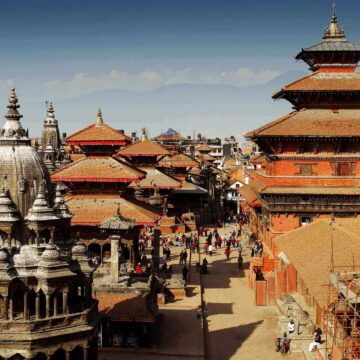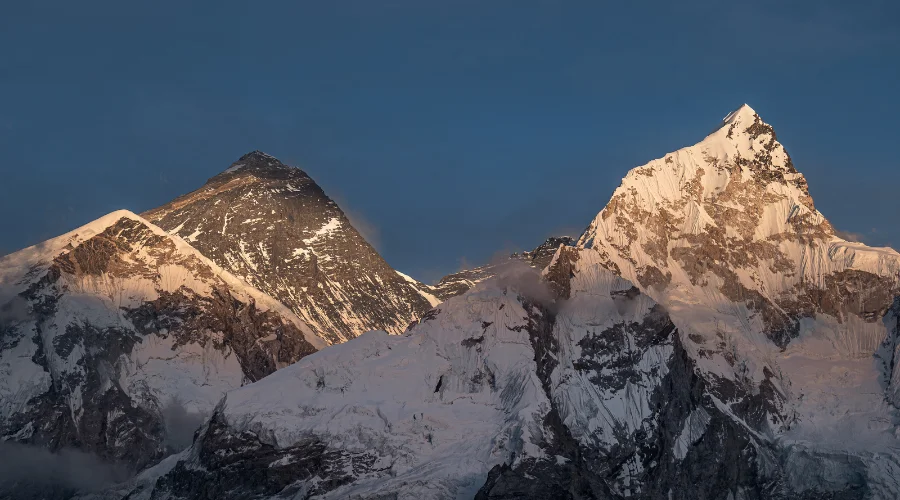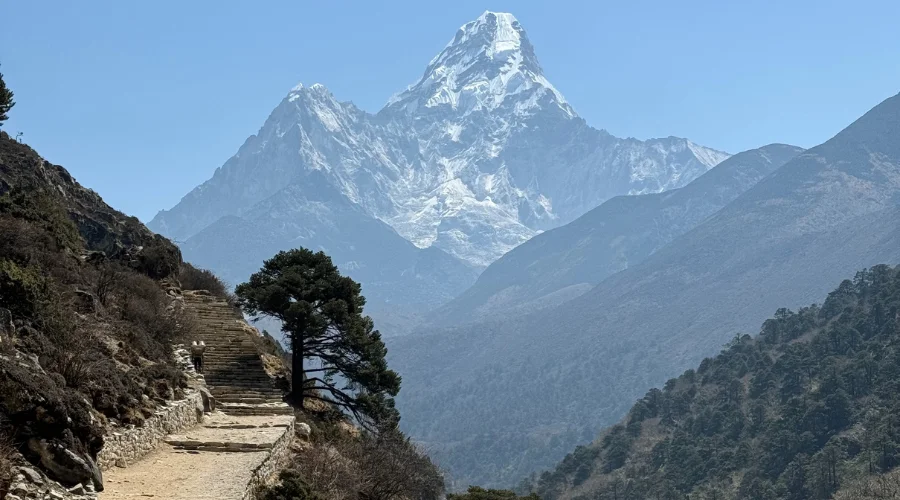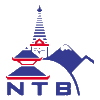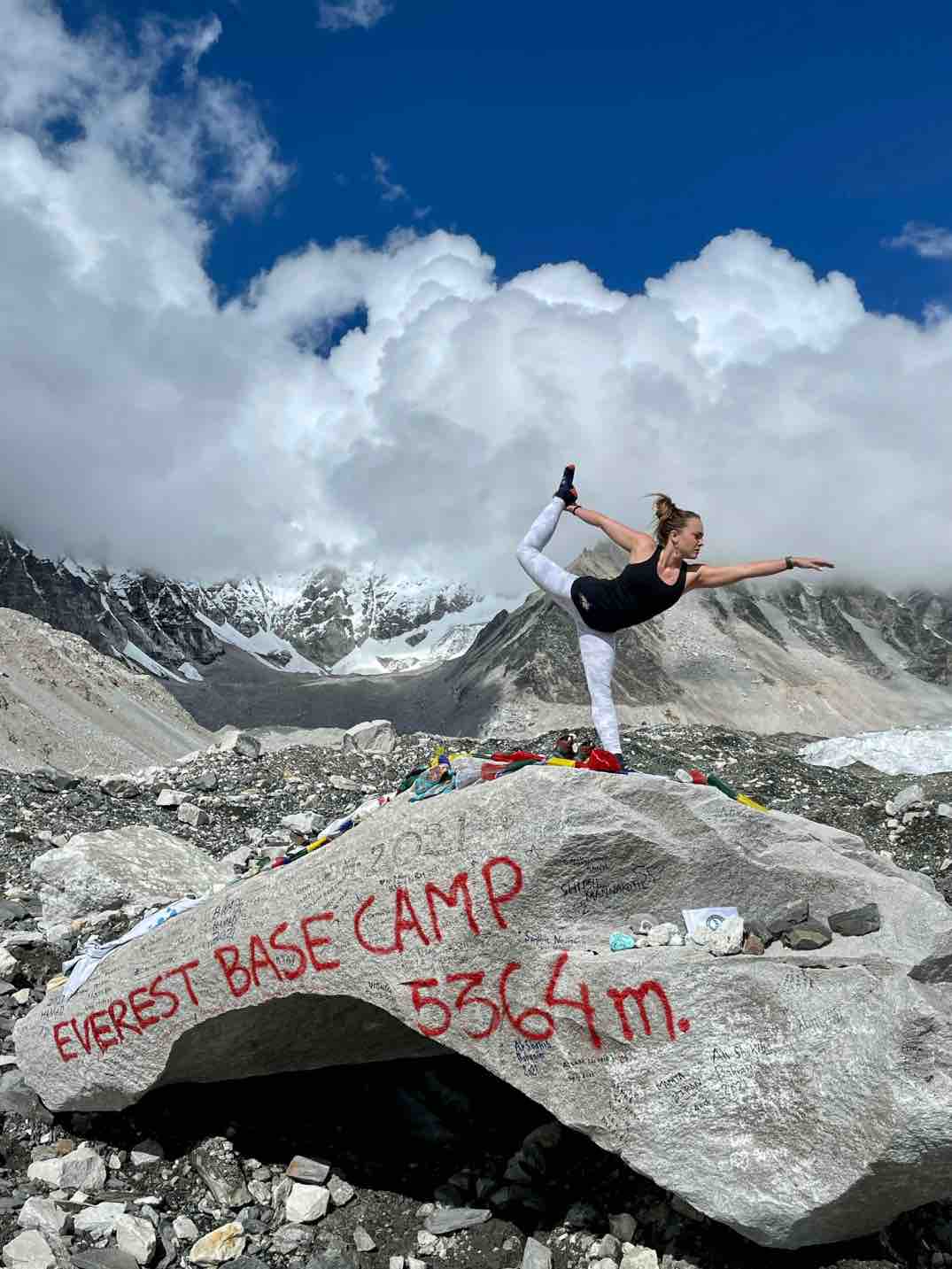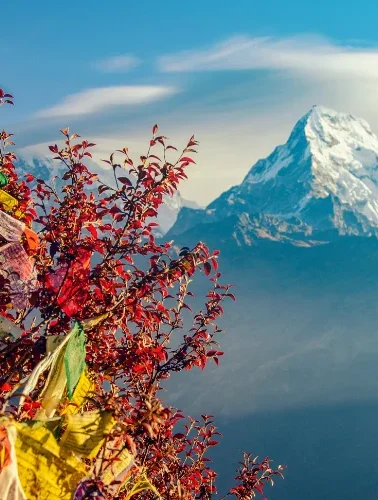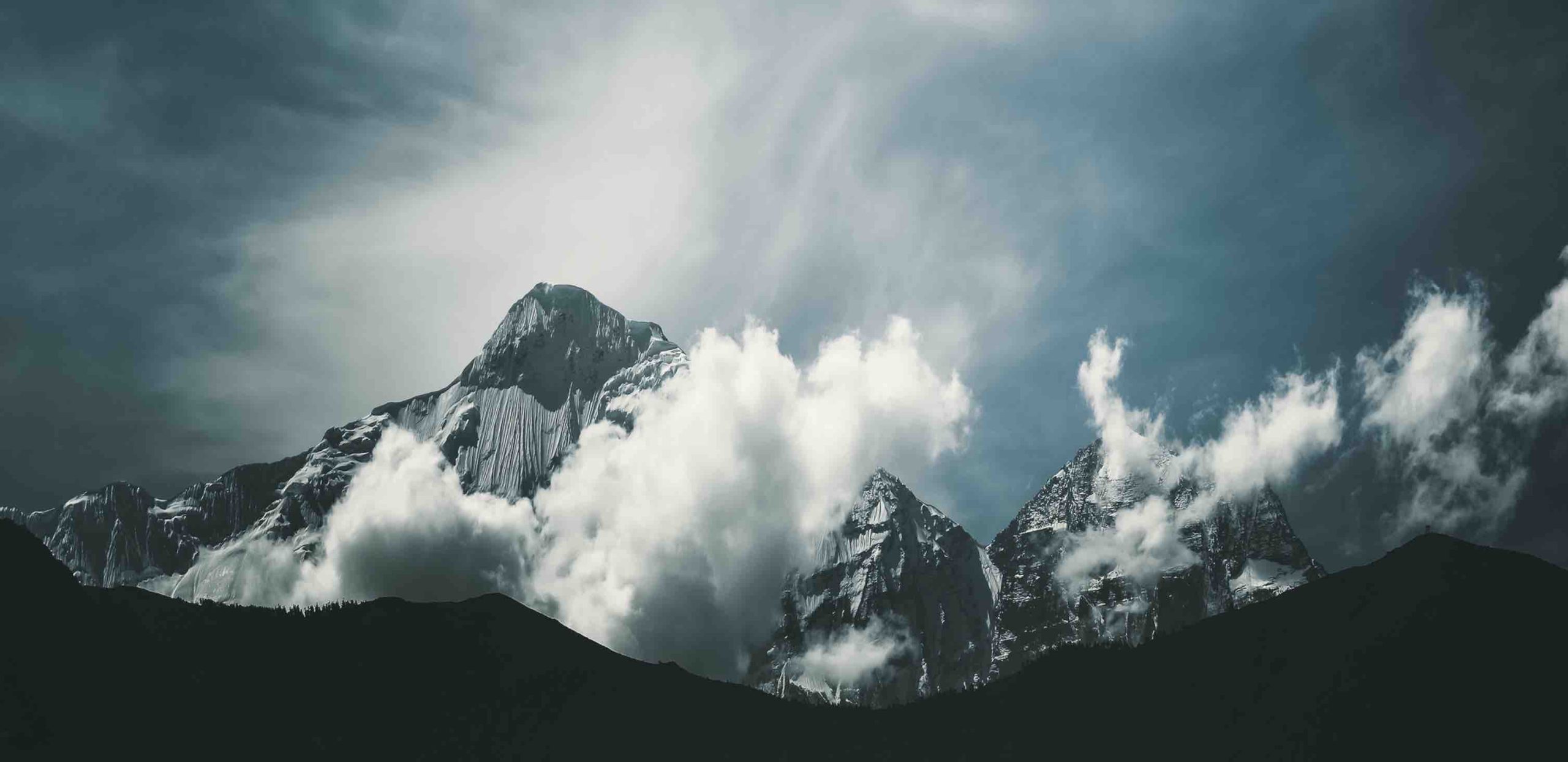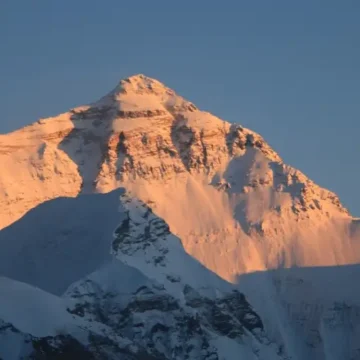
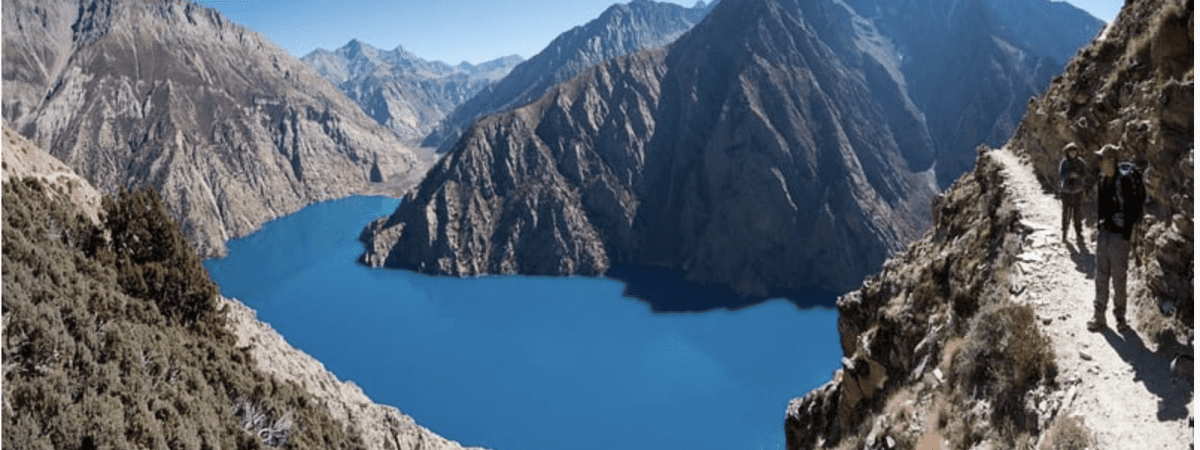
- TRIP DURATION
- 26 Days
- MAX. ALTITUDE
- 5300 m
- TRIP GRADE
- Hard
- LODGING
- Tea House & Camping
- BEST SEASON
- Spring and Autumn
- MEALS
- Breakfast, Lunch & Dinner
- COMMUNICATION
- Wi-Fi/ Local SIM Card
- PER DAY WALK
- 6 to 7 Hours
Upper Dolpo Trek Itinerary- 26 days
Upper Dolpo Trek Overview
Close to the Tibetan Plateau, Dolpo is one of the least explored regions of Nepal. With its boundary far away from modernization, the intact natural beauty and serenity of Upper Dolpo Trek are beyond explanation. If you ought to know what natural bliss and peace mean, Dolpo is the only place you ever need to be.
Upper Dolpo Trek remains a restricted region, meaning you need a special permit to wander here. Upper Dolpo trekking was only opened for tourists in 1989 and is protected as part of Shey Phoksundo National Park. Shey Phoksundo Lake is Nepal’s smallest and deepest lake, with colourful blue water.
Along with many natural wonders, Dolpo is also the place to witness the pure form of Tibetan culture. In the higher region, you can witness colourful alpine shrubs, and the lower region has an abundance of lush green meadows. You might find the hidden wildlife of blue sheep, mountain musk deer, and snow leopards among these lush meadows.
The Upper Dolpo trek route commences from Juphal when we fly from Nepalgunj. That means we should first get to Nepalgunj via flight or road and then fly to Jupal. Now, passing through many settlements, we shall reach Shey Phoksundo Lake at 3600 meters. Then, we cross the Kang—La Pass, which is known to connect the Phoksundo Valley and Shey Gompa. Then, we explore the valley of Upper Dolpo, where we will get an absolute retreat with the nature and culture of remote villages.
Highlights of Upper Dolpo Trek
- Follow the footprints of the traditional trans-Himalayan traders during the Upper Dolpo Trek and enter the wilderness of mountains.
- Explore the unique semi-arid vegetation behind the majestic Dhaulagiri range.
- A camping trek experience for the sense of true wilderness
- Witness century-old Bon practices in various monasteries (Shey Gompa, Yangze Gompa, and Bon Gompa) and live a classic Buddhist tradition
- Enticing views of Yak Caravan and lakes such as Shey Phoksundo
- Almost a month-long trek in Nepal’s mountains on a trail explored by few- a genuinely fulfilling and rejuvenating experience

Pristine Phoksundo Lake.
So, are you ready for this one-in-a-million experience?
ITINERARY
Day 01: Kathmandu to Nepalgunj flight (30 mins flight, 150m)
Our exciting journey to the Upper Dolpo beings only after we fly to Nepaljung from Kathmandu. Nepalgunj is a beautiful city on the southern border of India. Indians can directly join our Upper Dolpo Trek at Nepalgunj. Since the flight from the domestic terminal of TIA is usually scheduled in the morning, we shall have an entire day to explore Nepalgunj. Do visit the local temples and pond while you try the stress foods of Nepalgunj.
Overnight stay in a hotel
Day 02: Fly to Jhupal (20 minutes) and trek to Dunai(5-6 hrs/ 2,140m)
Our second flight from Nepalgunj takes us to Jhupal. We fly as early as possible since the weather in mountains can be very unstable. With awesome views of lush hills and the beautiful Himalayas, the mountain flight to Jhupal definitely feels exciting.
At Jhupal, we get our bags ready and start heading towards the Bheri River. Soon we will be walking on a narrow ridge taking us to Dunai. Dunai is the largest settlement of Dolpa and also its headquarters.
Overnight stay in tented camp
Day 03: Trek to Ankhe(2,130m, 5-6 hours)
On 3rd day of the Upper Dolpo Trek Itinerary, we follow the Bheri River to the north. The suspension bridge and terrace farms along the trail keep us excited while we walk to Phoksundo River Valley. Hiking over more ridges and canyons, we get to Rahagaon where we can see some quite old houses. Then, we walk into the very dense forest into a village that is called Ankhe. This is where the Shey-Phoksundo National Park commences and the mountains becomes cear.
Overnight stay in tented camp
Day 04: Trek to Sulighat (3180 m, 5 hrs)
We continue the Dolpo trekking package walking in the sub-tropical forest, making many ascents and descending on the way. Walking via the river that flows on a very rocky path, we reach Ryajik. After some interaction with the local area, we move towards Sulighat.
Overnight stay in tented camp
Day 05: Trek to Phoksundo Lake(3,611m/5-6 hours)
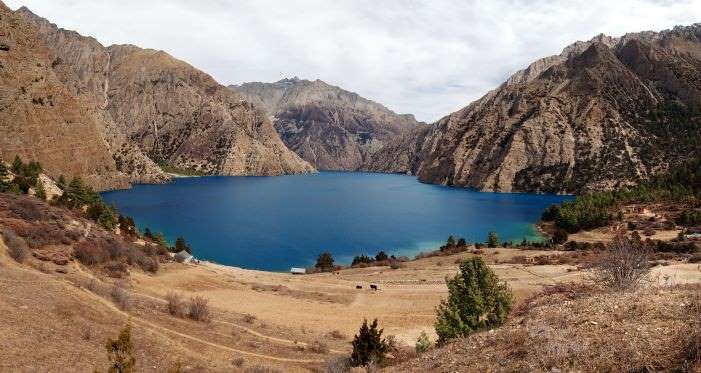
The 7th day of our Upper Dolpo trek is actually going to be exciting as we stroll in the valley leading us to the Phoksundo River and Pungmo River junction. We cross the river in the thrilling wooden bridge and then hike to the Pungmo River. Finally, we reach Phoksundo Lake almost at the end of the day.
Overnight stay in tented camp
Day 08: Visit Phoksundo Lake
As we are already at 3,600 meters above sea level, it’s wise to stop for a day and let our bodies rest well in this Dolpo trekking package. And the pristine beauty of Shey Phoksundo Lake makes it a perfect spot for acclimatization. The prodigious turquoise-colored lake and the visit to the Ringmo village make your day fruitful. We shall also visit an old Tibetan Buddhist Monastery nearby.
Overnight stay in tented camp
Day 09: Trek to Phoksundo Khola(3,750m/5-6 hrs)
After a wonderful day on the Lakeshore, we move to the west of Phoksundo Lake. Hiking in the tough rocky hills and the lush grassland, we get to the Phoksundo Khola. Although there’s nothing much to see around the river, we stop here for the night.
Overnight stay in tented camp
Day 10: Trek to Phoksundo Bhanjyang(4,717m/15,417ft)
Now, we walk on the north of the river, entering the glacial valley. Crossing many bridges in the river junction, we continue the uphill climb to a steep George. From the hilltop, we can see the Kang-La pass while connecting us to the Dolpo valley. For today, we set our camps right at the Phoksundo Bhanjyang.
Overnight stay in tented camp
Day 11: Trek to Shey Gompa Dolpo(4,500m/7 to 8 hours)

Ready for the most difficult and exciting part of your Upper Dolpo trek? Today, we walk beyond the Phoksundo valley and get to the Dolpo region. For that, we need to cross the via Kang-La pass which lies at 5,360m above sea level. This is the highest point of our trek offering the most magical view of deserted valleys and Crystal Mountain.
Now, heading downwards, we cross some more streams and yak meadows/ sheep to get into a red Buddhist shrine. Here, we are welcomed into Shey Gompa Dolpo. It’s your first night in the Dolpo region.
Overnight stay in a tea house
Day 12: Rest day
As the team will all be tired from the walk to the Kang-La Pass, you all deserve a rest day at Upper Dolpo Trekking. And without a doubt, Shey Gompa is an exciting place for the rest and acclimatization while we explore Dolpo. In the daytime, we take our time to explore Shey Gompa Dolpo. This is an important monastery in Upper Dolpo Trekking with hundreds of Buddhist devotees.
Overnight stay in a tea house
Day 13: Trek to Namduna Gaun (4,800m/ 6-7 hours)
After a rest day, we are all rejuvenated to walk on the path of the amid Juniper forest to explore Dolpo. Walking via the rocky canyon, we walk via the meandering trail first getting to Saldang-La Pass. At 5,200 meters, this will also be a challenging climb, but the views from the top are worth it. Then, we descend while walking on the north to Namduna Gaun. After visiting the Namgung monastery, we crash at Namduna Gaun for the night of this Dolpo trekking package.
Overnight stay in a tea house
Day 14: Trek to Saldang (3,620m/4- 5 hrs)
We start the 14th day of Upper Dolpo Trekking by walking in the barren hills for a couple of hours. Today’s walk to the Saldang Village, which lies on the slope above Namga River will be quite easy and relaxing. This is the biggest village in Inner Dolpo that has almost 600 people. You will find some decent tea houses and terrace farms during this exploration of Dolpo.
Overnight stay in a tea house
Day 15: Trek to Yangze Gompa(4,960m/4-5 horus)

Although our stay in Saldang village will be quite fun, we leave the place to head further north. Walking to the Nang Chu, we enter the more remote village of Tiling, and Lurigaon village. Finally, we reach Yangze village for the night where we can see the Bon-Po monastery and also visit the Panzang river.
Overnight stay in a tea house
Day 16: Trek to Sibu (4,560m/6-7 hours)
From Yangze, our Upper Dolpo Trekking Itinerary is two paths leading us to Sibu. If you pick the longer route, we get to walk via the village of Nishalgaon and Shimengaon. However, we walk on a shorter path that first takes us to Saldang village and then turns towards the Namdo village. This is also a large valley with almost 400 residents. In the daytime, we get to pray at Namdo monastery which lies close to the Nam Khong river, and then walk for a few more hours to Sibu.
Overnight stay in a tea house
Day 17: Trek to Jeng-la Phedi (4,900m/6-7 horus)
Now, following the Nam Khong river, we walk into the yak’s caravans. In Summer and Spring, you can see many yak herds grazing around in these caravans. However, the winter is all covered in snow. In a few hours, we get up to the Jeng La Phedi.
Overnight stay in tented camps
Day 18: Trek to Tokyu Gaon(4209m/7-8 hours)

The starting of the day is going to be quite challenging as we get to the top point of Jeng La Pass at 5110 meters. These two hours of the hike are worth the awesome picturesque views of the Dhaulagiri massif. Now, we walk down to Tarap Valley and then to Tokyu village which is our stop for the night. We set our camps and start preparing the food.
Overnight stay in tented camps
Day 19: Trek to Dho Tarap(4,040m/ 4-5 hours)
Today’s walk is quite relaxing as we head into the broad fertile valley of Dho Tarap. In the daytime, we visit several Chortens and take many beautiful pictures before crashing at Dho Tarap. Dho Tarap is an important destination for Upper Dolpo Trekking.
Overnight stay in Teahouse
Day 20: Rest Day
Today’s rest is not only for acclimatization. Since we want our trekkers to understand the lifestyle and culture of Dolpo, we spend a beautiful day here. Dho Tarap is a huge settlement at the highest altitude one can possibly imagine. Here, we get to visit the villages and the beautiful gompas. You can build a friendship with some of these Magars and Tibetans while also visiting the Bon Gompa. This is the highlight of the Inner Dolpo trek.
Overnight stay in Tea house
Day 21: Trek to Tarap Khola (3,800m/6 hrs)
Now, we start to lose altitude while we keep on descending to the lower section of the valley. Today’s trek through the bushes of junipers brings us to the meeting point of Tarap Chu and the Lang Khola. Then, we walk to Tarap Khola, which is also called Kamakharka to set up our camps.
Overnight stay in Tented Camp
Day 22: Trek to Khanigaun(3,150m/5 hours)
Another day of easy walk in the gorge of Tarap Khola until we reach Khanigaun. We will rarely see any houses and even met any people in this section of the tour.
Overnight stay in Tented Camp
Day 23: Trek to Tarakot ( 2,537m/ 4-5 hours)
First, we walk to the Lalberi village and then cross the thick sub-tropical forest leading us to the river. Then, we get to the Tarakot, a small town in Dolpo that was one of the fortresses. Tarakot was earlier the center of Tichorung Kingdom and used to be the hub for international trade in the past.
Overnight stay in Tented Camp
Day 24: Trek to Dunai (2,140m/5-6 hours)
After morning breakfast, we first get to the Bheri River. Now, walking via many gorges, we get to Lawan village. Exploring some more settlements of Byas Gadi, and Lochakhola Gaon, our path finally leads us to Dunai. The headquarters of Dolpo already has over 2700 residents and great tea houses.
Overnight stay Teahouse
Day 25: Trek to Juphal(2,475m,2-3 hrs)
It’s an easy walk towards the Jhuphal airport. After a lavish breakfast, we continue walking on the path of Thuli Bheri. First, we get to Dhupichaur and stop at Rupgad. After a final stop at Motipur, we reach Juphal for the night’s stay. The most memorable trek of your life i.e Inner Dolpo ends here at Jupal, it’s time for celebration.
Overnight stay in Teahouse
Day 26: Fly to Nepalgunj and to Kathmandu
Early in the morning, we shall first fly to Nepalgunj from Juphal. This short mountain flight with an awesome view of the hills and mountains will obviously be amazing. Then, we get on a flight taking us to Kathmandu from Nepalgunj. As we reach Kathmandu in mid-day, we have time for some shopping and enjoy a great dinner in Thamel. Your Inner Dolpo trek ends here.
Overnight stay in Hotel
useful info
Upper Dolpo Trek Difficulty
The Upper Dolpo trek difficulty is one of the toughest and the best treks in all of Nepal as it is a high-altitude trek where we can witness the old Tibetan culture and panoramic views of mountains. The Upper Dolpo Trek stands out for having an isolated environment and a rugged area, which makes hikers need to be ready for difficult hike paths, high altitudes, and long walking hours. This journey includes passing very hard passes like Kang La, Sela La, and Jeng La, which are all over 16,000 feet high and may be physically challenging, adding to the altitude sickness risk.
The trail is generally steep, rocky, and perched on a mountain, with minimal facilities and basic accommodation, so hikers should only carry necessary supplies and be self-sufficient. Navigation is always challenging because the weather can change in a move. Sudden storms, wind, and cold weather are added extremes that will make an Upper Dolpo Nepal trek a task. Regardless of these difficulties, however, the trip yields magnificent views, ancient monasteries, pure Upper Dolpo culture, the spirit of adventure, and a recognition of the choice as being a true getaway from civilization, which are somewhat the reasons for choosing the trials for those who seek wilderness.
Trip Grade: Fitness level, Medical, and Health
The Upper Dolpo Nepal is graded as a very demanding trek, suggesting a high level of physical fitness for this hike. Hikers must be healthy, fit, and have experience in a field that requires long walking hours on a difficult day. The preparations should include training the heart, developing strength, and boosting endurance to shine in the rugged weather. The Upper Dolpo circuit trek involves not only high-altitude passes more than 5,000 meters above sea level but also many steep climbs and descents, as well as mud, snow, and rocky sections, making it necessary to cross the river several times.
Medical and Health considerations are critical for the Upper Dolpo circuit trek. Due to the high altitudes, trekkers must be aware of the symptoms of altitude sickness and take proper precautions, such as acclimatizing properly and staying hydrated. It is recommended to have a thorough medical check-up before starting the trek, and those with pre-existing conditions should consult with their doctor.

Culture of Dolpo
Altitude Sickness at Upper Dolpo Trek
The trekking in Upper Dolpo, Nepal, leads hikers into one of the most elevated and remote areas, which peaks at over 5,000 meters. This journey involves beating the high passes of Kangla, Sela, and Jengla, each of which requires a hardcore ascent. At these heights, the air and oxygen concentration are thinner, which explains a physically exhausting hike. High-altitude trekkers should be well prepared for the hardships presented in such an environment, such as the freezing temperatures and the chances of strong wind storms.
Despite these hardships, the magical mountains, traditional Tibetan life, adventure, and immersion in the wild make the upper parts of this Upper Dolpo Nepal a special experience for those who dare to visit. Our goal is to take the time to properly acclimatize, and our strategy will be to maintain a constant, steady pace throughout the Upper Dolpo Nepal trek.
Trekking Experience of Upper Dolpo Trek
Upper Dolpo trekking is a very uncommon adventure that gives one the possibility to peek into the undiscovered and off-road world, which is never going to be forgotten. The Upper Dolpo Trek itinerary, which lasts 26 days, takes you to the top of rugged mountains, deep valleys, and high mountains that make you feel that you are the only person on the earth, so the views never end. The region has a wealth of culture and seems to be overwhelmed with tradition.
There is no doubt that one of the biggest highlights of the Upper Dolpo trek is visiting Shey Gompa, one of the oldest monasteries in the world. The Monastery is located in the most picturesque places and is completely immersed in beautiful mountain peaks and pure scenery.
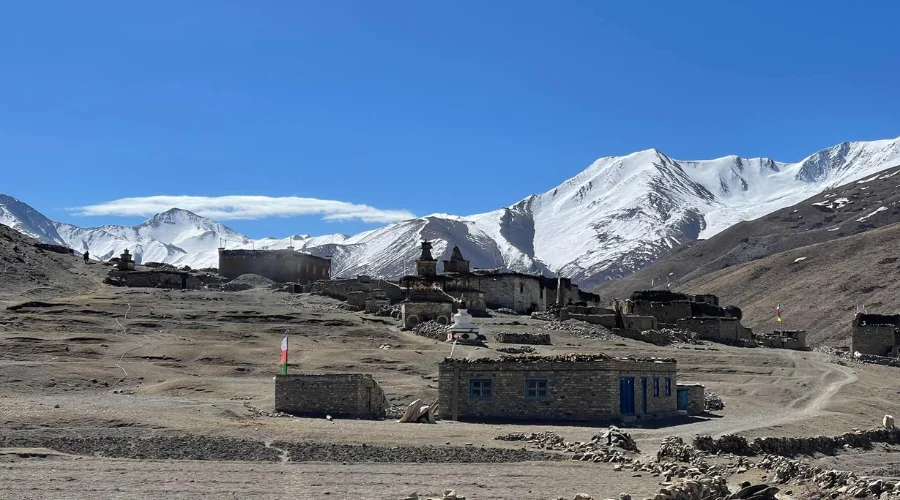
Another interesting part of the hike is the cultural encounter, where the locals openly share their customs, hospitality, and Upper Dolpo culture in their heritage. The hiking route crossed riverside hamlets, the buildings dwelling far from the narrows of the road. Houses made of mud bricks with Tibetan prayer flags are prominent in the landscape.
The area is rather distant from the cities, with no facilities or infrastructure. Therefore, when trekking, you are expected to be equipped to hike for a long time and be ready for camping and non-luxurious accommodations. Although the remote location is worrisome, the breathtaking views, wild culture, and sense of adventure get one’s heart pumping.
Emergency and Evacuation at Dolpo trek
Emergency and evacuation procedures in the Upper Dolpo trek are challenging due to the region’s remote and rugged terrain. In a medical emergency, the first step is to contact a guide or local authority who can arrange for assistance. If the situation is severe and immediate evacuation is necessary, a helicopter rescue is often the most viable option. However, helicopter rescues can be delayed due to weather conditions and aircraft availability, making it essential for trekkers to carry comprehensive travel insurance that covers high-altitude trekking and helicopter evacuation.
Kit and equipment for Upper Dolpo Trek
Clothing:
- Base layers (thermal tops and bottoms)
- Insulating layers (fleece or down jacket)
- Waterproof and windproof jacket and pants
- Trekking pants and shirts
- Warm hat and gloves
- Sun hat and sunglasses
- Buff or neck gaiter
- Lightweight trekking shoes
- High-quality trekking boots with ankle support
- Gaiters for snow and mud protection
- Socks (wool or synthetic, multiple pairs)
Camping Equipment (if you want one):
- Tent (lightweight and durable for high-altitude conditions)
- Sleeping bag (rated for sub-zero temperatures)
- Sleeping pad or inflatable mattress
- Portable water filters or purification tablets
- Lightweight water bottles
- Headlamp with extra batteries
Trekking Gear:
- Trekking poles
- Backpack (50-70 litres)
- Daypack (20-30 liters)
- Waterproof backpack cover
- Map and compass or GPS device
- Multi-tool or knife
- Lightweight binoculars (optional)
- Trekking umbrella (optional)
Personal Items:
- Personal hygiene items (toothbrush, toothpaste, biodegradable soap, wet wipes)
- Sunscreen and lip balm with high SPF
- First aid kit (bandages, antiseptic wipes, pain relievers, blister treatment)
- Personal medications
- Quick-dry towel
- Travel documents (passport, permits, insurance)
Food and Snacks:
- High-energy snacks (nuts, energy bars, dried fruits)
- Lightweight, easy-to-cook meals (instant noodles, dehydrated meals)
- Electrolyte tablets or powder
Miscellaneous:
- Camera with extra batteries and memory cards
- Solar charger or power bank
- Trash bags for waste
Special training for Dolpo Hike
No special training is required for the Upper Dolpo trek, but it is always better to be prepared for the trek with the necessary exercises and training. The Upper Dolpo Trek itinerary lasts around a month with Himalayan Masters. Do some cardio to boost your stamina since you need to walk a lot during the Upper Dolpo trek in Nepal.
Best Time for Upper Dolpo Trek
We should choose the best time for Upper Dolpo trek, which is spring and autumn. From March to May, this season offers stable weather and blooming vegetation and, as a result, becomes a visually attractive period to hike through in early spring. The temperatures remain moderate most of the time, and the skies are normally clear, dotted with the imposing peaks of the mountain range. The roads are also not crowded like during the valley season. Trekkers often might be caught unaware of the occasional rains, which are common, especially in the low areas.

The autumn months of September, October, and November are another prime period for the Dolpo treks in the Upper Dolpo. This season’s weather is uniform; it is not very hot in the daytime, and there are no clouds in the sky. Those autumn months are the optimum time for the best mountain views when the skies are often very clear. This time of the year is also known for its dry trails; thus, hiking becomes quite easy and more convenient. Adding on, autumn also hosts harvest celebrations here, providing the trekkers a platform to get in touch with the culture and customs of the land.
Weather of Upper Dolpo trek region
Upper Dolpo weather changes a lot depending on the season. In spring (March to May), the area has little warmer temperatures, with daytime highs ranging from 10 degrees Celsius to 20 degrees Celsius at the base, while nights can be quite cold, around -10 degrees Celsius at the summit. The skies are often uncloudy, resulting in astonishing views and great visibility of the surrounding tops. Spring is also the season when the landscape bursts into its own with wildflowers presenting themselves.
The weather of Upper Dolpo is gentle in fall (September to November), and the sky is clear. Therefore, this period is very convenient for trekking. Temperatures during the day from 10 degrees Celsius to 18 degrees Celsius, and nighttime temperatures fall about -5 degrees Celsius to -15 degrees Celsius at higher altitudes. The dry autumn weather makes trekking a safer and more comfortable outdoor activity. While the weather is variable, it is especially unpredictable at high altitudes; therefore, trekkers should carry suitable clothing to avoid freezing and getting wet.
Permits for Upper Dolpo Trek
To go trekking in upper Dolpo, it would be mandatory to have permits as it is remote and inaccessible. Trekkers have to take permits for Dolpo Buddha Village Administration, which facilitates all of the wards 4 to 6; Shey Phoksundo Rural Municipality encompasses all of the wards 1 to 7, and Charka Tangsong Rural Municipality covers all of the wards 1 to 6. The total Upper Dolpo permit cost is USD 500 for the first 10 days.
If the Upper Dolpo Trek itinerary lasts more than ten days, an additional Upper Dolpo permit cost of USD 50 per person per day is payable. These travel permits also manage and conserve the area. Hence, the natural and cultural environment of Upper Dolpo is secured to appreciate the beauty and heritage of this unique region. The climbers should, in advance, arrange for these permits through a registered trekking agency, as this is usually an essential requirement for an unproblematic visit to this world-class region of Nepal.
Accommodation and food during the Upper Dolpo trek
The traditional lifestyle of Upper Dolpo shows a unique ancient Tibetan customs and religious practices associated with the native Bonpos religion. On the route are teahouses and lodges that provide two-person accommodations in twin beds or dormitory rooms. Teahouses offer a haven full of hospitality after a long day of covering the same distance. The rooms have blankets, but trekkers are recommended to carry their sleeping bags for more warmth, preferably during the colder periods.

Regarding the food in Upper Dolpo Trek, it is also quite easy, but there are sufficient amounts of nutrients; most tea houses contain a variety of dishes, including dal Bhat (lentil soup with rice), noodles, pasta, and Tibetan bread. Trekking at high altitudes requires a generous amount of energy, and this meal is filling and highly nutritious for such a purpose. It’s highly advisable to limit yourself to meat and fish if the location’s remoteness renders vegetables unfresh. For their snack cravings, Hikers can stock up at the bakeries, chocolate shops, and food-packaged stores at the teahouses.
Electricity and battery recharge, water during the Upper Dolpo Trek
Electricity and battery recharge facilities are limited and sometimes unreliable in Upper Dolpo, whereas in Jomsom, they are easily available. The majority of the teahouses and lodges usually have solar panels but are not able to consistently generate electricity. Make sure you have enough power in your devices by carrying extra batteries or a power bank with you.
Regarding water, water purification tablets or a water filter would be ideal because tap water may not be safe for consumption. Bottled water can be found at teahouses, but it is important to keep an eye on waste and to use as little plastic as possible by using refillable water bottles.
Roads on the Upper Dolpo Circuit and how to avoid them
The trekking route through upper Dolpo is well-known for its remote and rough topography. Also, the fact that roads are generally not common in this area. Meanwhile, some sections of the trek can happen at the same time, along with jeep tracks and trails that the local people use. So as not to be on these roads and make sure the trekking experience remains true. Trekkers can opt for different routes or trails that lead away from the roads. Make sure to carry the Upper Dolpo trek map.
With Himalayan Masters
Booking/ airport pickup
Himalayan Masters makes booking hassle-free. You can either check their website for online booking or contact them via email or contact number. They are available 24/7.
As per your flight time, a member of Himalayan Masters will be at the airport waiting for your arrival. After welcoming you, they will transfer you to a hotel for your stay.
Support team
Himalayan Masters provides a dedicated support team for the Upper Dolpo trek, including experienced guides and porters who guarantee a safe and enjoyable journey. They help with navigation, accommodation, and meals, allowing trekkers to focus on the adventure and exploration of the stunning landscapes.
Starting point/ Ending point of Upper Dolpo trek
The starting point for the upper Dolpo trek is Kathmandu, from where you will fly to Nepalgunj. From there, you will fly again to Juphal, your official starting point for the trek. The beginning point of the Upper Dolpo trek with Himalayan Masters is typically Juphal, a small town in the Dolpa district of Nepal. The trek concludes back in Juphal, providing a full-circle experience of this remote and enchanting region.
A typical day on the Upper Dolpo Trek
A usual day on the Upper Dolpo Trek starts with a morning waking up when the sun rises over the beautiful Himalayan scenery. With a delicious breakfast served at the teahouse. Trekkers start their trek, going through a tough trail and crossing high-altitude mountain passes. They will be enjoying the view of several white snowy peaks. On their journey, they pass by isolated villages, old monasteries, and the unique Tibetan culture to better understand the rich local culture.
Our lunch break is along the trail at a teahouse or a scenic spot. By lunch, trekkers ascend, marvelling at the pristine scenery of the untouched wilderness and encountering wildlife species like yaks and mountain goats. At the end of the day, trekkers will be doing their last leg to their chosen destination, where they will enjoy a warm dinner and socialize with other trekkers before heading to the cozy accommodation for a much-needed rest.
Trekking costs of Upper Dolpo Trek
The Upper Dolpo Trek cost fluctuates with the season and Upper Dolpo Trek itinerary you plan to spend on your trek. However, the Upper Dolpo Trek cost is usually $4200. Upper Dolpo Trek cost per day depends on how you spend during the trek.
The Upper Dolpo permit cost might be crucial. They are USD 500 for the first 10 days and USD 50 per person per day after that.
It is recommended that you hire a guide for USD 25 – USD 35 per day and a porter for USD 20 – USD 30 per day, including all meals, accommodation, and insurance.
Staying at a teahouse costs around USD 10 to USD 20 per night, including meals. Meals cost between USD 5 and USD 10.
Airfares from Kathmandu to Juphal range from USD 200 to 300 per person, and bus rides are more affordable.
The price of renting or buying equipment ranges from USD 1 to USD 10 per item per day. You must also plan for items such as travel insurance, tips, souvenirs, and other activities.
Travel insurance for Upper Dolpo Trek
Travel insurance is mandatory for trekking in Upper Dolpo, which provides medical evacuation and cancellation for unexpected natural disasters. The trek is extremely difficult and remote; therefore, travel insurance with a range for high-altitude trekking and helicopter evacuation provided is a necessity. It eases the mind, and trekkers will be able to get relevant medical care and assistance in case of an emergency. It is always better to carry an Upper Dolpo trek map with you.
Additional expenses for Upper Dolpo Trekking
Besides the Upper Dolpo Trek cost of trekking, travel insurance, and other expenses, hikers should also budget for equipment rental or purchase, bits of gifts, gratuity to the guides and porters, and any optional activities and side trips. The rental fees might comprise activities such as the use of sleeping bags, trekking poles, and down jackets, which are obtainable in Kathmandu or Juphal before starting the trekking.

Moreover, a ticket from Kathmandu to Nepalgunj is another factor that will increase additional Upper Dolpo Trek cost. Although expenses will likely vary based on specific desires and situations, budgeting rightly is crucial to have a pleasant and memorable trekking experience in Upper Dolpo).
ATMs on Upper Dolpo Trek
While we cannot expect an ATM to be in such a remote area, you can find one in major cities like Kathmandu and Nepalgunj. It is always better to carry enough cash before going on the trek. Some places on the Upper Dolpo Trek also have ATMs, like in Juphal, but you cannot use the ATM because of the internet access in the area. Since it is a remote area, the internet may not work as per your needs.
Final words,
Well, we don’t need to say that Upper Dolpo trek is a once-in-a-lifetime kinda journey that has been reserved only for the bravest soul. So, get ready for this utmost form of adventure with Himalayan masters.
FAQs
How hard is the Upper Dolpo trek?
A month-long journey in a land with no houses, no internet, and no electricity is not a joke. The experts have marked the Inner Dolpo trek difficulty as “Challenging.” And this is among Nepal’s hardest and longest trekking trails. That being said, the rewards are astounding! And, you must be aware of the different difficulties you face during this Upper Dolpo trek.
However, you don’t need any technical climbing skills and the trek is easily achievable with the proper guidance.
What Dolpo trek permits you to need?
What kind of accommodation in Upper Dolpo is available?
Is the Upper Dolpo trek worth it?
Is Dolpo and Dolpa same?
Can you trek solo in Upper Dolpo region?
Speak to an Expert





Sandip Dhungana
Nepal 🇳🇵
Whatsapp: +977-9823636377
Speak to an Expert





Sandip Dhungana
Nepal 🇳🇵
Whatsapp: +977-9823636377



